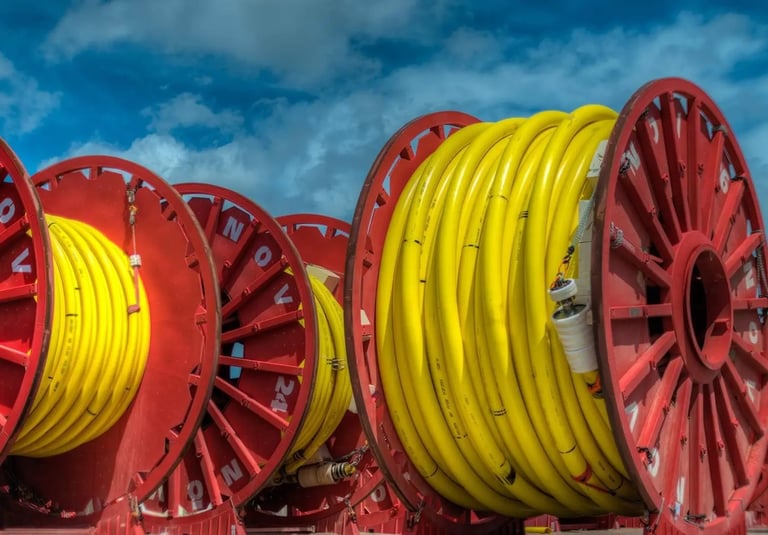

Detect Defects Before They Cause Serious Damage the flexible riser represents a significant portion of the total cost of an oil extraction unit. Its importance is vital for oil extraction in Brazilian territorial waters, where oil is found at great depths, and successful extraction heavily depends on a well-functioning flexible pipe system. Failure of these components can lead to catastrophic consequences, making early defect detection crucial for safety and operational efficiency.
In some applications, defect detection alone is not enough to ensure the operational safety of components and structures. Therefore, non-destructive testing (NDT) techniques must be adapted to analyze the stress state affecting the component. This study presents efforts in developing non-destructive stress analysis systems designed to monitor the stress conditions in the tensile armor wires of flexible risers used for transporting oil and its derivatives. By combining various NDT techniques, the results showed a strong correlation between applied loads and collected data, highlighting the high applicability of magnetic techniques for engineering material characterization and operational condition monitoring.






As an integral part of any effective predictive maintenance program, non-destructive testing (NDT) has proven to be highly applicable due to its advantages, including fast analysis, relatively low cost, automation capability, and, most importantly, its non-invasive nature, preserving the integrity of the component being analyzed. Typically, NDT is used to detect defects and discontinuities that could compromise the usability of a component. However, with advancements in modern engineering, current applications demand stricter control over material properties, making it necessary to assess the stress state of components to ensure long-term performance and safety.
Beyond detecting visible defects, it is crucial to understand and monitor internal stresses that may lead to component failure under operational conditions. Continuous monitoring is essential to predict issues before they occur, allowing for timely corrective actions. Techniques such as magnetic and ultrasonic analysis provide a detailed view of the internal conditions of materials, helping identify high-risk areas and enabling informed decisions regarding maintenance and component replacement.
The application of NDT techniques for stress analysis and defect detection is well-established across various industries, particularly in sectors where safety and efficiency are critical. In the oil and gas industry, the integrity of flexible risers is vital for the continuous and safe operation of extraction units. The development and implementation of advanced NDT methods add an extra layer of security, safeguarding the significant investment made in equipment and infrastructure.
In summary, the combination of various NDT techniques not only enables defect detection but also provides in-depth insights into material stress states, essential for maintaining the structural and operational integrity of components. Continuous innovation and the adaptation of these techniques to meet the specific needs of the industry are key to addressing future challenges and ensuring the safety and efficiency of oil extraction operations.




